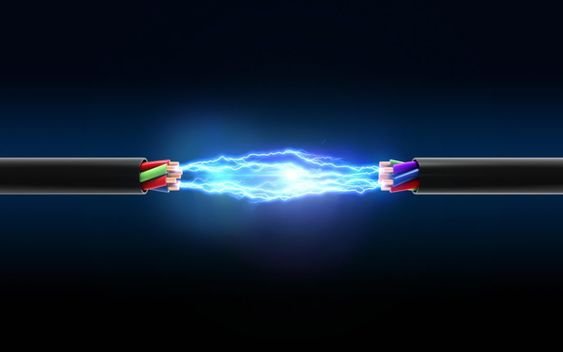
Optical cables, also known as Toslink cables, are an essential component in modern audio setups, enabling the transmission of high-quality digital sound between various devices. Unlike traditional copper cables, optical cables use light to transfer audio signals, offering several advantages in sound clarity and overall performance.
What is an Optical Cable?
An optical cable is designed to transmit digital audio signals through light pulses rather than electrical signals. These cables are typically made of plastic or glass fibers that carry the light from the source to the destination. The use of light for signal transmission significantly reduces the risk of electromagnetic interference, a common issue with traditional copper cables.
How Optical Cables Work
Optical sound cables function by converting electrical audio signals into light signals at the source device. These light signals travel through the optical fibers and are then converted back into electrical signals at the receiving device. This process allows for the transmission of high-fidelity sound with minimal signal degradation.
Uses of Optical Sound Cables
Optical cables are widely used in various sound systems due to their ability to deliver high-quality audio. Some common applications include:
- Home Theater Systems: Optical cables are often used to connect DVD players, Blu-ray players, and gaming consoles to home theater systems. The digital audio signal transmitted through the optical cable ensures that the surround sound experience is immersive and free of interference.
- Soundbars: Many modern soundbars include an optical input to receive audio from TVs or other devices. By using an optical cable, users can enjoy enhanced sound quality, especially when watching movies or playing video games.
- Televisions: Optical cables are commonly used to connect TVs to external speakers or sound systems. This setup allows for a cleaner sound, as the optical cable can carry high-quality audio signals directly from the TV to the speaker system.
- Audio Receivers: In setups that involve multiple audio sources, such as CD players, turntables, and streaming devices, optical cables are often used to connect these devices to an audio receiver. The receiver then processes the digital audio signal and sends it to the connected speakers, ensuring consistent sound quality across all devices.
- Game Consoles: Optical cables are popular among gamers for connecting consoles like the PlayStation or Xbox to external sound systems. The use of optical cables ensures that in-game audio is crisp and clear, providing an immersive gaming experience.

Types of Optical Cables
- Plastic Optical Fiber (POF): These cables are more flexible and affordable but generally offer lower performance compared to glass fiber cables. They are suitable for shorter distances and less demanding applications.
- Glass Optical Fiber: These cables provide superior sound quality, longer distances, and better overall performance. They are the preferred choice for high-end audio systems and professional applications.
Optical Cable Connectors
The most common type of optical cable connector is Toslink. It’s a small, rectangular connector that is widely used in consumer electronics. Other connectors, such as ADAT and fiber optic connectors, are used in professional audio applications.
Advantages of Using Optical Cables
- High-Quality Sound: Optical cables transmit digital audio signals without the risk of interference, resulting in clear and precise sound.
- Reduced Interference: Because they use light instead of electricity, optical cables are immune to electromagnetic and radio frequency interference.
- Durability: Optical cables are less prone to wear and tear compared to traditional cables, as they do not carry electrical signals that can cause corrosion or degradation over time.
Considerations When Using Optical Cables
While optical cables offer many benefits, there are a few things to consider:
- Cable Length: Optical cables are generally limited to a maximum length of about 10 meters (33 feet) before signal degradation occurs. For longer distances, alternative solutions like HDMI or specialized optical cables may be necessary.
- Compatibility: Not all devices are equipped with optical inputs or outputs, so it’s essential to check compatibility before purchasing an optical cable.
- Setup Complexity: Although optical cables are straightforward to connect, ensuring proper alignment of the connectors is crucial for optimal performance.
Conclusion
Optical sound cables play a vital role in modern audio setups, offering a reliable and high-quality connection for various sound systems. Whether you’re enhancing your home theater, connecting a soundbar, or setting up a gaming console, optical cables provide an excellent solution for transmitting digital audio with minimal interference. By understanding the uses and advantages of optical cables, you can make informed decisions to improve your audio experience across different devices. For more click here
Frequently Asked Questions
Q: Can I use optical cables for headphones? A: While it’s possible, most headphones use analog connections. Optical cables are primarily used for digital audio.
Q: Are all optical cables the same? A: No, there are different types of optical cables and connectors. Choose the right one based on your equipment and needs.
Q: Can I use a damaged optical cable? A: No, a damaged optical cable can affect sound quality. Replace it with a new one.
Q: How long do optical cables last? A: With proper care, optical cables can last for many years.
Ready to upgrade your audio experience? Optical cables are the key to unlocking the full potential of your sound system. Give them a try and prepare to be amazed!
